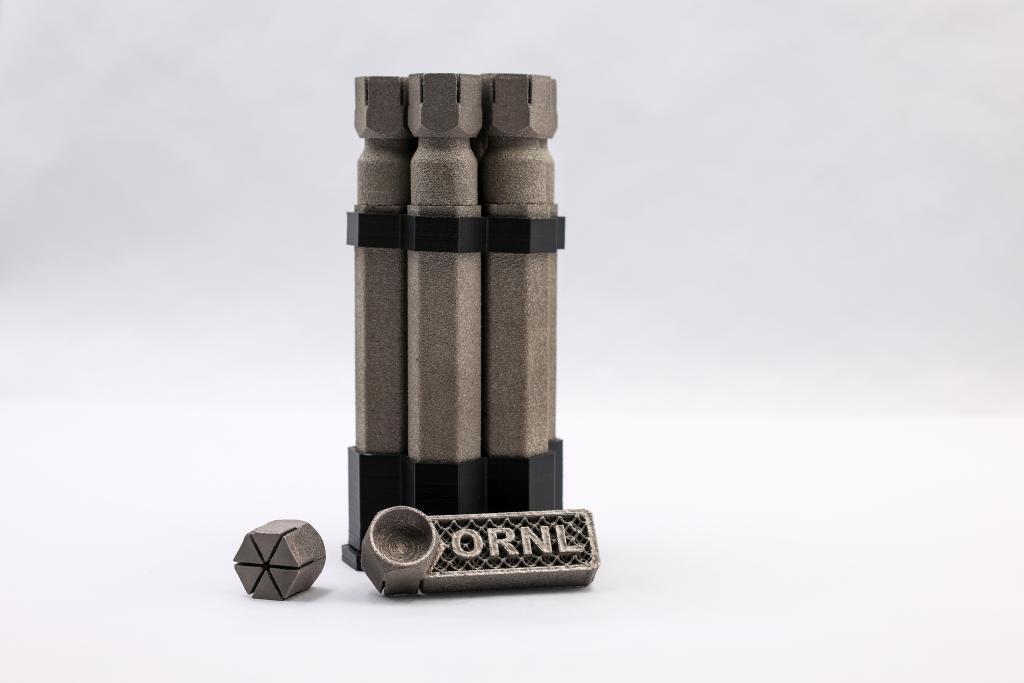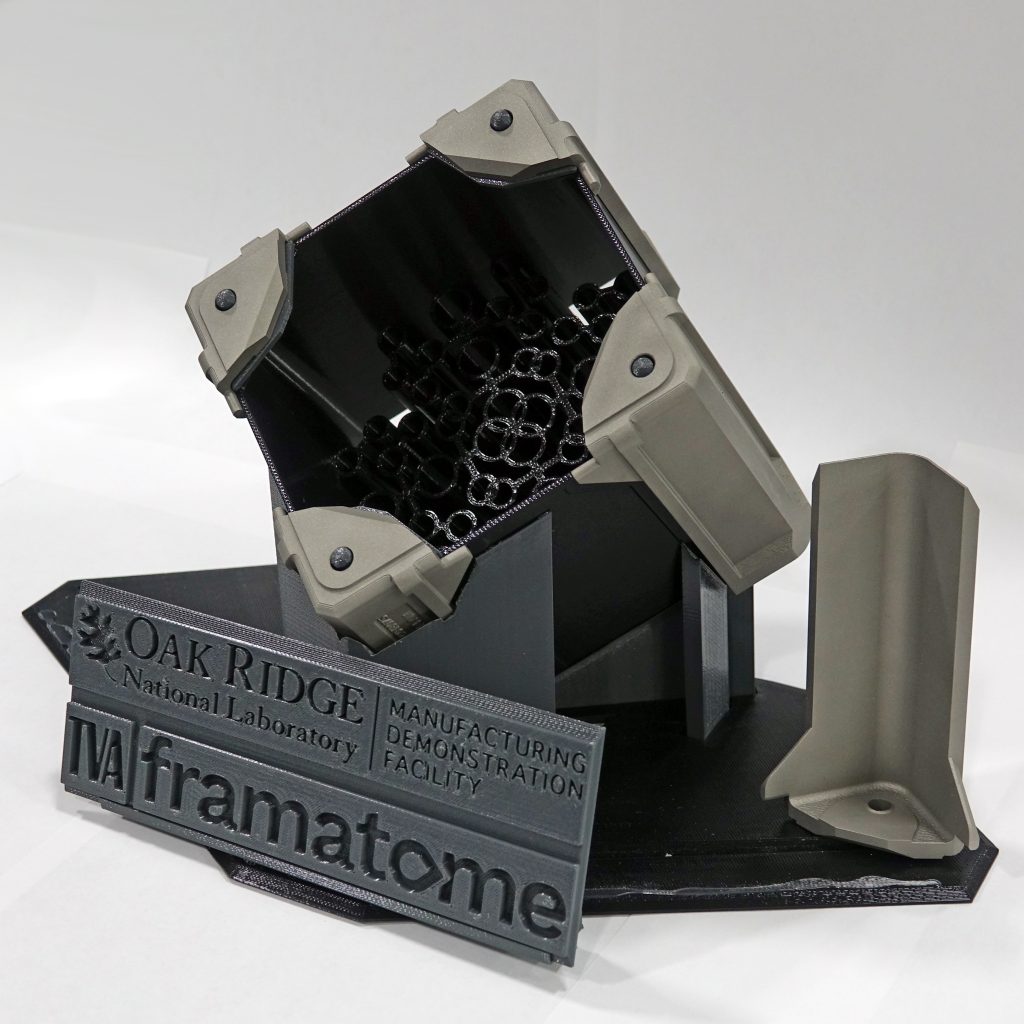Researchers at the US Department of Energy (DoE)’s Oak Ridge National Laboratory (ORNL) have 3D printed defect-free tungsten parts with complex geometries.
Produced using electron-beam additive manufacturing at the ORNL’s Manufacturing Demonstration Facility (MDF), these tungsten parts are said to be the first of their kind. According to the ORNL team, this accomplishment offers significant potential for clean energy technologies, such as fusion energy.
The 3D printed parts have been designed for extreme environments, with tungsten possessing the highest melting point of any metal. As such, the material is well suited to use in fusion reactors, where plasma can reach temperatures above 180 million degrees Fahrenheit. This is significantly hotter than the sun’s centre, which comes in at 27 million degrees Fahrenheit.
“Electron-beam additive manufacturing is promising for the processing of complex tungsten geometries,” commented Michael Kirka, Group Leader of the Deposition Science and Technology Group at ORNL.
“This is an important step for expanding the use of temperature-resistant metals in energy resources that will support a sustainable, carbon-free future.”

3D printing defect-free tungsten parts with complex geometries
Despite its ability to withstand high temperatures, manufacturing complex tungsten parts is a challenging process. Significantly, when in its pure form, tungsten is brittle and can easily shatter at room temperature.
To overcome this, the ORNL team developed an electron-beam 3D printer, which can deposit tungsten layer by layer into precise and complex 3D geometries.
The system employs a magnetically directed stream of particles in a vacuum to melt and bind tungsten powder into solid-metal objects. Thanks to its high-vacuum enclosure, the electron beam 3D printer reduces contamination from foreign materials and limits residual stress formation.
This research forms part of the DOE’s efforts to advance clean energy through the development of new renewable sources, such as nuclear fusion. The ORNL has previously used additive manufacturing to enhance technology for established nuclear energy applications.
In 2020, it was announced that ORNL had 3D printed fuel assembly brackets for the Tennessee Valley Authority’s (TVA) Browns Ferry Nuclear Plant in Alabama. The components were developed in partnership with nuclear fuel supplier Framatome as part of the Transformational Challenge Reactor (TCR) Program based at ORNL. This initiative explores opportunities for faster and cheaper nuclear energy distribution within the US.
The TCR Program has also seen ORNL develop a 3D printed nuclear reactor core. Through this project, ORNL sought to establish new methods in reactor design, manufacturing, licensing and operation.
In 2020 the team presented its design for the reactor core, scaled up the additive manufacturing technology necessary to build it, and developed methods to confirm the consistency and reliability of the 3D printed components.

3D printing bolsters renewable energy sector
Additive manufacturing is witnessing growing adoption to support global efforts to transition away from traditional non-renewable energy sources and adopt greener alternatives.
Previously, GE’s wind turbine manufacturing division, GE Renewable Energy, invested in construction-3D printing specialist COBOD to help drive this renewable energy transition. This investment expanded on previous collaborative efforts between the two companies, which has seen them work to co-develop 3D printed “record tall” wind turbine towers.
Elsewhere, researchers at the U.S. National Renewable Energy Laboratory (NREL) developed a novel process for 3D printing wind turbine blades using recycled resin. Said to improve the performance and end-life recyclability of the blades, the 3D printing process uses thermoplastics that can be melted and reused.
To demonstrate the effectiveness of this approach, the engineers fabricated a 13-meter prototype. The team believes that this process could yield cost and speed gains for manufacturers. The researchers noted that 3D printing could reduce the weight and cost of turbine blades by 10%, and cut lead times by 15%.
Want to help select the winners of the 2024 3D Printing Industry Awards? Join the Expert Committee today.
What does the future of 3D printing hold?
What near-term 3D printing trends have been highlighted by industry experts?
Subscribe to the 3D Printing Industry newsletter to keep up to date with the latest 3D printing news.
You can also follow us on Twitter, like our Facebook page, and subscribe to the 3D Printing Industry Youtube channel to access more exclusive content.
Featured image shows the 3D printed complex, defect-free tungsten parts. Photo via Michaela Bluedorn/ORNL, US DoE.


